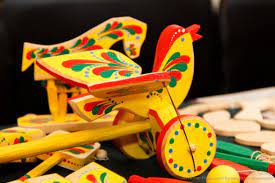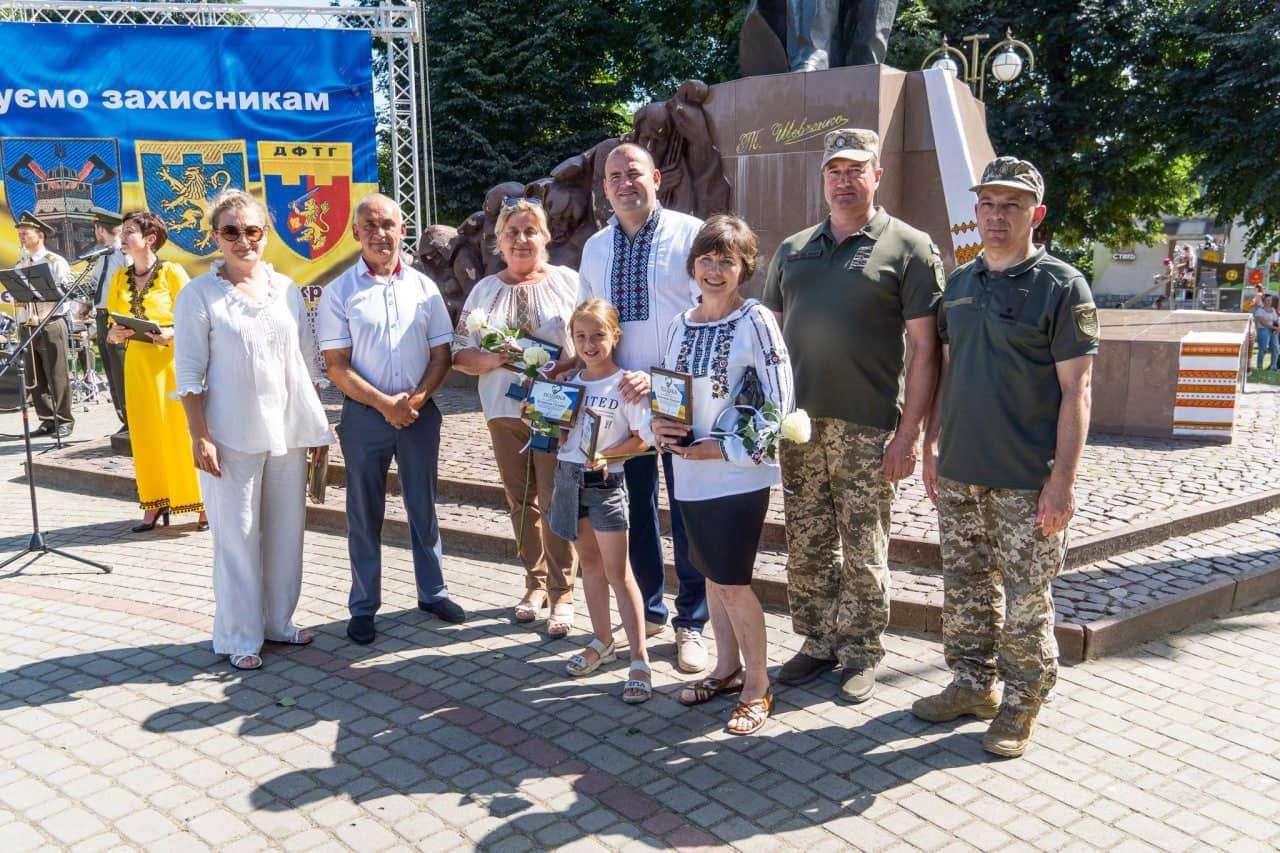This website uses cookies so that we can provide you with the best user experience possible. Cookie information is stored in your browser and performs functions such as recognising you when you return to our website and helping our team to understand which sections of the website you find most interesting and useful.
Yavoriv Territorial Community

The Yavoriv Community is the largest community in the Lviv Region in terms of the area, which totals 841.3 km2 and accounts for 35.4% of the area of the Yavoriv District and 3.9% of the area of the Lviv Region. The Community is located on the border with Poland.
The administrative centre of the Community is the town of Yavoriv, which is also the administrative centre of the Yavoriv District. The town of Yavoriv is located 60 kilometres away from the regional centre of Lviv. The Yavoriv Community consists of eighty-two localities.
As of 01 January 2023, the population in the Yavoriv Community amounted to 51,698 residents.
Men: 19,845 residents
Women: 20,821 residents
Children: 11,032 residents
Internally displaced persons: 3,057 people
History
The administrative centre of the Yavoriv Community is the town of Yavoriv. The first mention of the town of Yavoriv is associated with the donation by Prince Wladyslaw Opolski to his loyal soldiers, brothers Reynold and Nytkow, of the localities of Novy Silets and Porudno near Yavoriv in 1376.
Yavoriv emerged as an agricultural, trade, craft settlement on the Lviv – Yaroslav route.
The name of the town of Yavoriv comes from the sycamore trees that grow in abundance in the valley of the Shklo River. According to another version, the name of the town as a region came from the legendary prince Yavor mentioned in the ancient Kyiv Rus chronicles of the 13th – 14th centuries.
There are many unique sites of historical and cultural heritage in the Yavoriv Community.
The Church of the Placing of the Belt of the Holy Mother of God is a monument of Ukrainian folk wooden architecture of the 19th century. The church is located 900 metres northeast of the Yavoriv – Hrushiv road, at the entrance to the village of Lisok.

The Community is also famous for its Yavoriv pie. This is a traditional holiday, Sunday and wedding dish in the Yavoriv area and Galicia in general, included in the National List of Elements of the Intangible Cultural Heritage of Ukraine.

The Yavoriv embroidery is a type of Ukrainian embroidery typical of the Yavoriv District in the Lviv Region, which is characterized by colours such as green, orange, yellow and black.


Wooden painted Easter eggs are made from pear, birch, sycamore, beech or spruce trees. They can also be carved, inlaid, and painted with oil paints. It has become a good tradition to hold the annual Yavorivska Pysanka (Yavoriv Easter Egg) festival in the Community, which popularizes the tradition of making Easter eggs.

It is difficult to find many towns in the world that gave the name to a toy. Yavoriv is such a unique town. And the Yavoriv toy has been popular with children for several centuries. And although there are not so many folk craftsmen now whose families passed down the secrets of the craft from generation to generation, the real art of the Yavoriv toy is experiencing a revival.
This is evidenced by the invitation of the Yavoriv toys not only to prestigious exhibitions, but also, for example, the decoration of the main Christmas tree of the Christians of the world in the Vatican with angels made on the basis of motifs of the Yavoriv toys.
Wicker weaving is an equally important craft there. Bags, baskets, shoes, hats, furniture decoration are made from wicker. Wicker weaving by using natural materials, as many researchers assume, belongs to the original industries and probably predates weaving and production of ceramic dishes. Wicker weaving was mainly common in areas adjacent to lakes and rivers, and straw products were traditionally found in areas where rye and wheat were grown.
Yavoriv carving is also actively developed in the Community making a unique impression with its character, ornamentation, and technique.
Another craft is carving, i.e. the art of decorative design known since ancient times by printing various patterns and ornaments on canvas with the help of special carved boards, forms, wooden clichés, and machine tools. The works of local weavers and craftsmen involved in the creation of the Yavoriv carving technique are exhibited at the Andrey Sheptytskyi Lviv National Museum.
Economy and Welfare
Production operations in the territory of the Community are carried out by twenty-three agricultural enterprises, including seventeen farms. There are one hundred and eighteen enterprises operating in the Yavoriv Community.
The most common types of operations carried out by the entrepreneurs in the Community are retail trade, trucking, temporary accommodation and catering, wood processing and manufacturing of wood products, maintenance and repair of motor vehicles.
The most popular enterprises in the Community produce chemicals, metal products, machines and equipment, process wood and make wood products.
For example, Sniezka-Ukraine has been known in Ukraine for two dozen years because it was created as one of the enterprises of the international Śnieżka Group, which, for more than 38 years of its operations in Eastern Europe, has managed to become prestigious and trusted among consumers and expand its production capacity outside Poland.
Today, the plant has two workshops. In one of them, water-based paints, acrylic enamels, primers, glues, antifungal and other products are produced, while the other produces dry putty surfaces.

Dereviany Dim Company was founded in 2003. Its key lines of business include the production of glued beams for wooden houses and the production of pallets (Euro pallets). The company sells products throughout Ukraine and exports them to the European Union.
The joint Ukrainian-Polish enterprise “Yats-Bol” is engaged in the manufacture and sale of a wide range of wooden products of the highest quality. The company has been efficiently operating in the field of wood processing for more than 20 years; the first wood milling line at the enterprise was launched in 1996; German equipment for the production of parquet was purchased two years later.
In April 2014, Lemberg Battery was established in cooperation with European investors, providing domestic and European manufacturers of rechargeable batteries with lead alloys through the processing of used batteries.
The agricultural sector is the leading branch of the Yavoriv Community economy and has significant potential for development.
The agricultural sector of the Yavoriv Community is represented by the cultivation of grain crops, oilseeds, vegetables and tubers, other annual crops, the breeding of dairy cattle, pigs, and poultry.
The Yavoriv Industrial Park functions in the territory of the Yavoriv Community and is located five kilometres away from the Hrushiv – Budomiez customs crossing.
The educational network in the Yavoriv Community includes 36 educational institutions.
At present, the problem of groups including a large number of children at the existing preschool institutions remains relevant, i.e., 131 children are educated in 100 places. A large number of children are on the waiting list for placement at preschool educational institutions; only 888 children (21.7%) out of 4,085 children of preschool age receive preschool education. And solving this problem is a priority for the Community.

The Yevhen Smuk Stadium is represented by the Checkers section attended by eighteen children. Also, during the year, twelve Health mini-football groups function, in which up to 150 people participate. 424 children train at the Yavoriv Children’s and Youth Sports School. Children are admitted to five sports sections: football, powerlifting, table tennis, games (basketball and volleyball), as well as athletics.
The Yavoriv Children’s School of Arts named after Mykhailo Verbytskyi is an extracurricular art education institution that offers a full range of artistic disciplines: from music to visual arts.
Medical services to the population of the Yavoriv Community are provided by forty-one health care facilities, including: two hospitals, eleven outpatient clinics of general practice of family medicine and twenty-two paramedic-midwifery centres.
Medical facilities of the Community are insufficiently equipped with medical equipment and devices.
The Community runs the Nemyriv sanatorium – one of the oldest sanatorium-resort complexes in Ukraine, unique due to the most concentrated hydrogen sulphide water in Ukraine and Anna mineral water for consumption. The healing effect is enhanced by the natural conditions of the sanatorium: surrounded by a large (100 hectares) mixed forest, near a large lake with flowing water, the resort has a good climate with absolutely clean air.

The cultural arsenal of the Community includes the Sokil Cultural and Art Centre and forty-three culture centres, thirty-nine branch libraries, three museums and an art school in the town of Yavoriv.
The Yavoriv Quarry (Yavoriv Sea) is the largest man-made lake in Ukraine in terms of depth (up to 70 m) and water volume (over 200 million m³), which provides the Community with great opportunities for the development of its recreational potential.

Community and War
During the first days of the war, the residents of the Yavoriv Community rushed to defend their Motherland against russian aggression. Today, more than 1,500 men defend Ukraine in the ranks of the Armed Forces of Ukraine. Three local heroes of the Heavenly Hundred died during the Revolution of Dignity in 2013-2014, twenty-nine heroes were killed during the Anti-Terrorist Operation, seventy-nine New Heroes have been killed in the current war, twenty are considered missing, more than thirty-nine are seriously wounded, and five are in captivity.
Those residents of the Community who cannot fight on the front lines today join various volunteer organizations and help the Ukrainian military, working in the rear. Every day they weave nets, organize charity concerts and collect medicines.
Great attention in the Community is paid to helping internally displaced persons. Since the beginning of the war, more than 3,000 internally displaced persons have found shelter in the Yavoriv Community.


The Red Cross Society is also active in the Community.

People of the Community

The mayor of Yavoriv, Ihor Hrabovskyi, was elected to the post of mayor for the first time in 2020. As the full-scale invasion of the enemy into the territory of Ukraine began, he often organizes trips to the East with humanitarian aid and food products for our military, as well as for the affected residents of communities located on the front-line territory.


Development Strategy
Communal infrastructure and engineering networks remain one of the least equipped areas of activities, are characterized by a shortage of financial resources and unsatisfactory technical condition of equipment.
The Community still does not have centralized sewerage and treatment facilities. Therefore, the quality of water in the Shklo River deteriorates due to sewage penetrating it, which in turn causes pollution of the Vistula river basin.
There is an urgent need to create a drainage network in the Yavoriv Community. From a geo-structural point of view, Yavoriv is advantageously located for the construction of treatment facilities, the topography of the area makes it possible to build self-flowing sewage networks along the streets of the town, which does not require the forced delivery of wastewater to treatment facilities.
An important factor in the development of the Community is the improvement of the quality of life of its residents through the restoration of public places in the localities. An analysis of the current situation in the Yavoriv Community shows that 70% of the localities do not have central squares, 89% have no squares and parks, and 89% have no sidewalks (rural localities).

List of Sources
- Facebook page of the Yavoriv Town Council: facebook.com
- Official website of the Yavoriv Community: yavoriv-rada.gov.ua
- Yavoriv Community Development Strategy: yavoriv-rada.gov.ua
- Hurt portal: gurt.org.ua
- Interviews with the Community representatives
